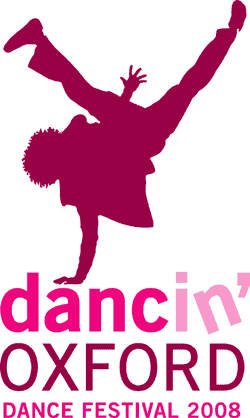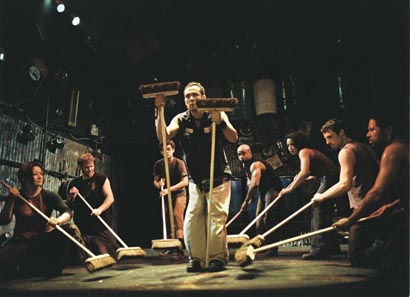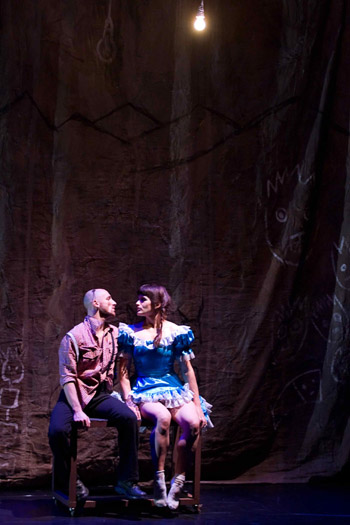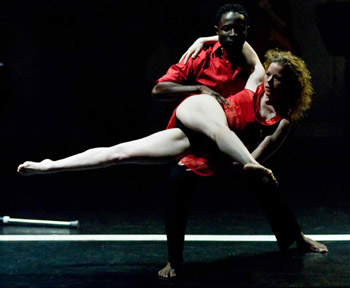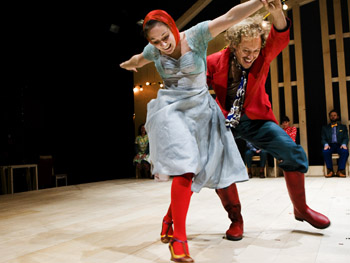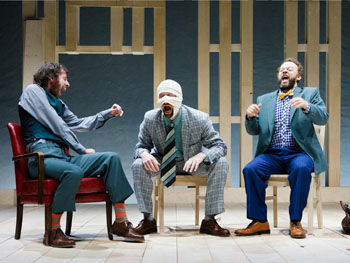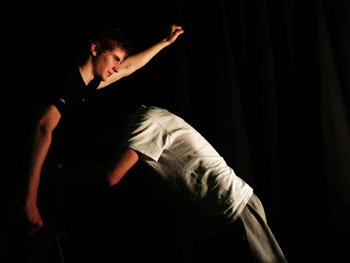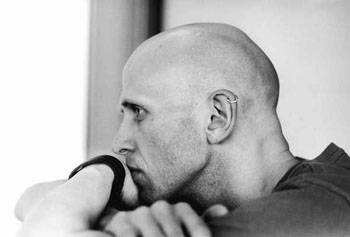CANdoCO Dance Company, Oxford Playhouse, Wed Feb. 13th 2008.
Double bill: The Stepfather & And Who Shall Go To The Ball, from disabled and non-disabled contemporary dancers.
Yoking together two extraordinarily diverse pieces – and immersing themselves so completely in the logic of each that the contrast seemed to make perfect sense – was only the first of the brave and successful moves made by CanDoCo.
Their opener – Arthur Pita’s ‘The Stepfather’, was really more of a piece of silent theatre than pure dance. The piece took its structure from a piece of dark country written by the Violent Femmes, whose narrative of familial murder is played out in its entirety at the beginning before being (literally!) rewound and expanded into a tale of infidelity and madness. This was not a terribly physical piece – apart from a couple of intensely sexual duets, both involving Bettina and a grandstanding solo from Frederick Opoku-Addaie as barman ‘Jimmy Horn’, movement was subordinated to the impetus of the storytelling. However, there were some moments of real physical wit – the clever use of a second male dancer (Marc Brew) as a spectral ‘double’ to the troubled Stepfather (Jorge M. Crecis), and an hilarious ‘sex scene’ in which limbs (and crutches) poked at impossible angles through holes in the disturbingly scrawl-covered curtain that formed the main backdrop.
The second half – Rafael Bonachela’s ‘And who shall go to the ball?’ could not have been more different. It was no surprise to read that production designer Torsten Neeland has a background in industrial design - his brutal architecture of light and metal thoroughly complemented the aggressive geometry of the dancers themselves as they jerked, writhed and battled to Scott Walker’s angular bursts of experimental sound. I was reminded, at times, of the robotic factory workers in Fritz Lang’s ‘Metropolis’. The most compelling segment was a tragic duet between Brew and Crecis, working together as beautifully as in the earlier piece, conveying a desperate need to connect with each other even as their movements relentlessly pushed them apart.
CanDoCo aim for accessibility, but that doesn’t mean the same thing as ‘easiness’. This was hard stuff to watch. That was partially due to the sheer amount of action happening on the stage – there was always more than one place to look. But it was also down to the piece’s starkness, its refusal to mean anything beyond its own physicality. It defied analysis, yet ultimately the emotions that drove it were so visible on stage, and the entire company so committed to their expression, that this didn’t seem to matter.




